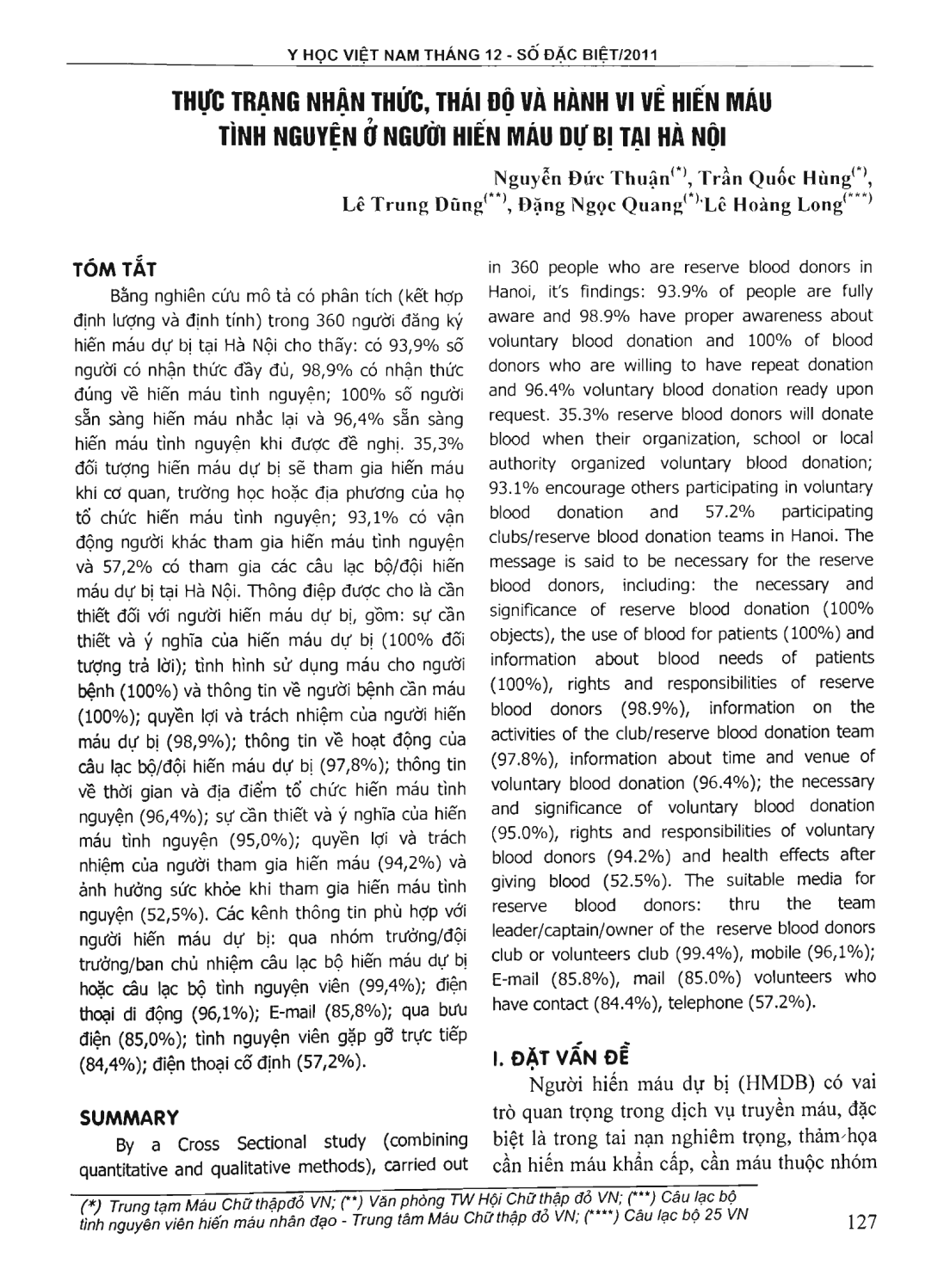
By a cross-sectional study (combining quantitative and qualitative methods), carried out in 360 people who are reserve blood donors in Hanoi, it's findings: 93.9 percent of people are fully aware and 98.9 percent have proper awareness about voluntary blood donation and 100 percent of blood donors who are willing to have repeat donation and 96.4 percent voluntary blood donation ready upon request. 35.3 percent reserve blood donors will donate blood when their organization, school or local authority organized voluntary blood donation; 93.1 percent encourage others participating in voluntary blood donation and 57.2 percent participating clubs/reserve blood donation teams in Hanoi. The message is said to be necessary for the reserve blood donors, including: the necessary and significance of reserve blood donation (100 percent objects), the use of blood for patients (100 percent) and information about blood needs of patients (100 percent), rights and responsibilities of reserve blood donors (98.9 percent), information on the activities of the club/reserve blood donation team (97.8 percent), information about time and venue of voluntary blood donation (96.4 percent); the necessary and significance of voluntary blood donation (95.0 percent), rights and responsibilities of voluntary blood donors (94.2 percent) and health effects after giving blood (52.5 percent). The suitable media for reserve blood donors: through the team leader/captain/owner of the reserve blood donors club or volunteers club (99.4 percent), mobile (96,1 percent); E-mail (85.8 percent).mail (85.0 percent) volunteers who have contact (84.4 percent), telephone (57.2 percent).
- Đăng nhập để gửi ý kiến
